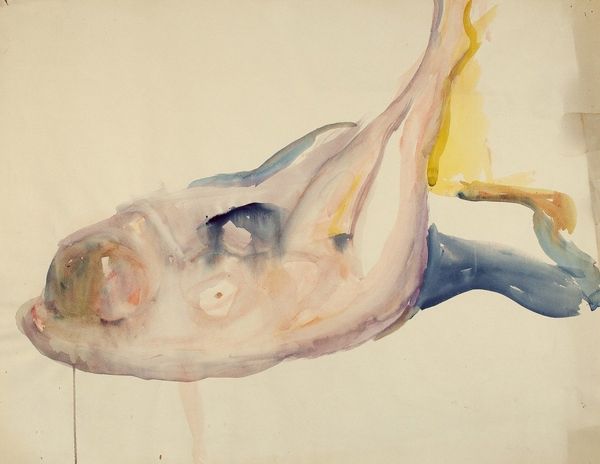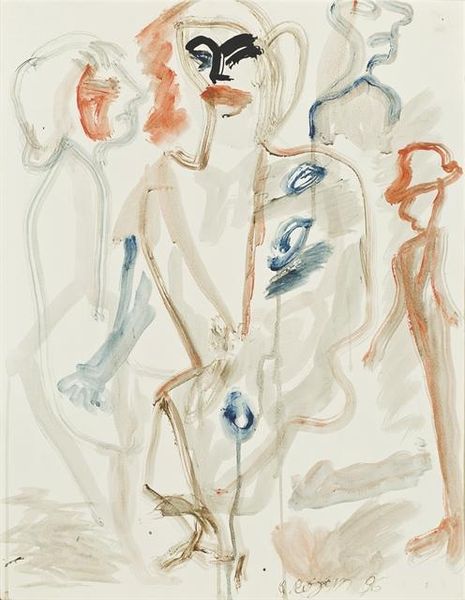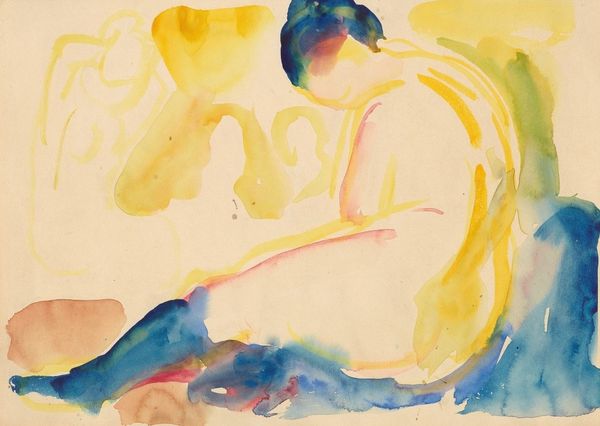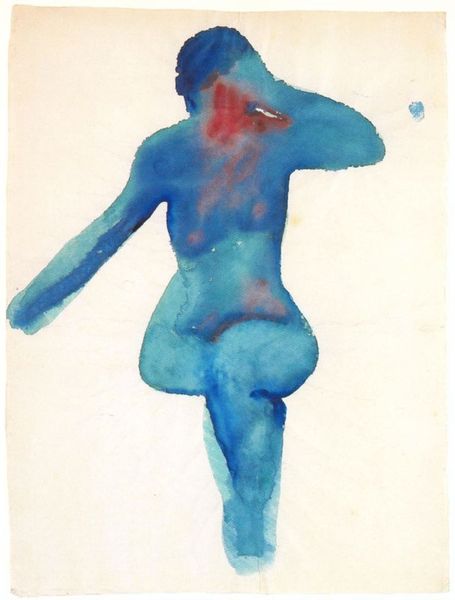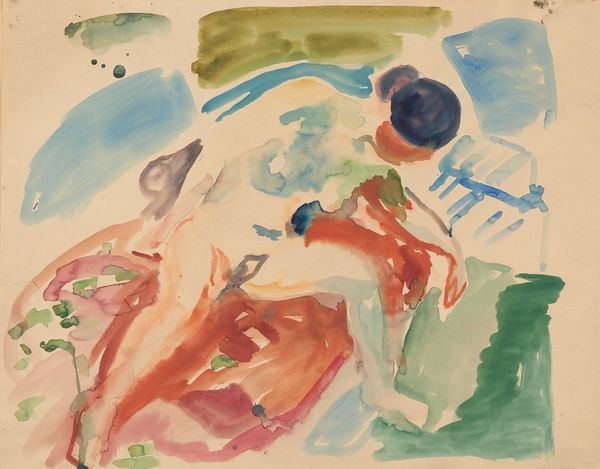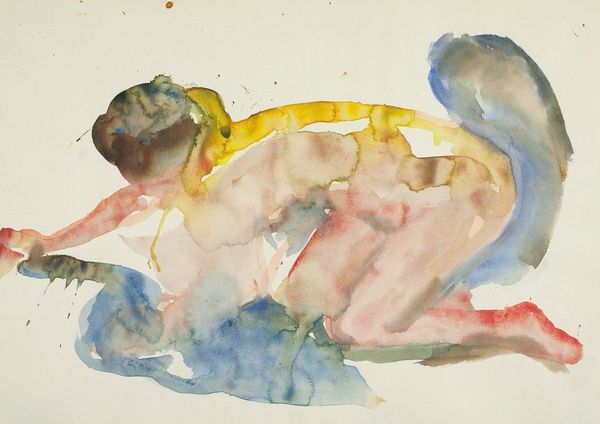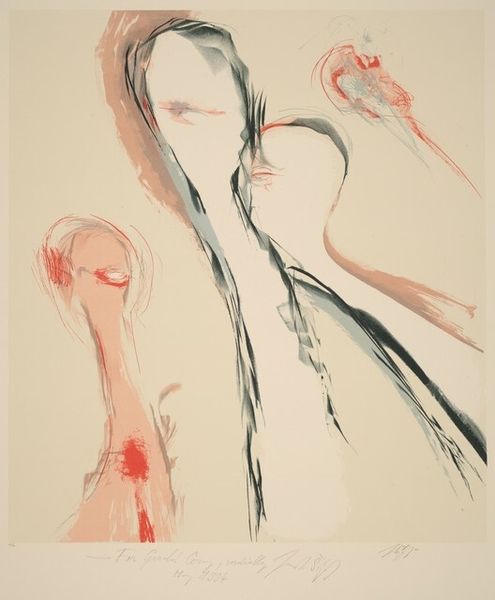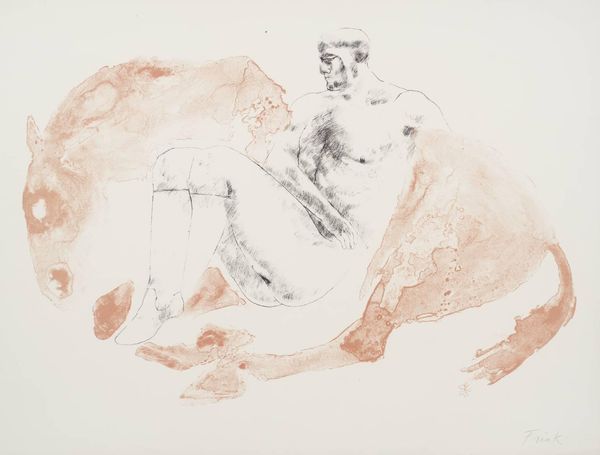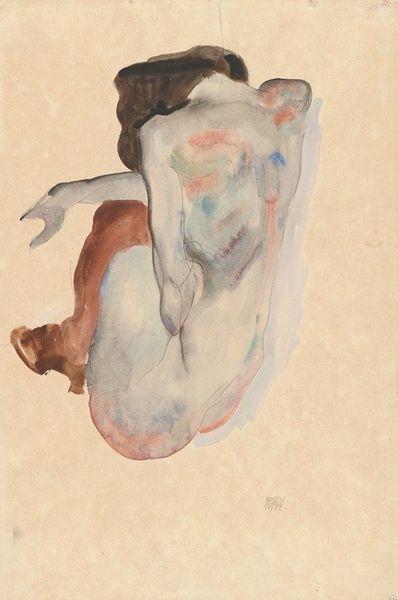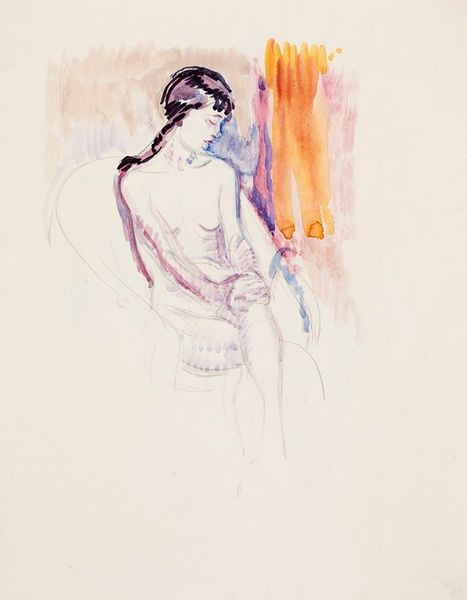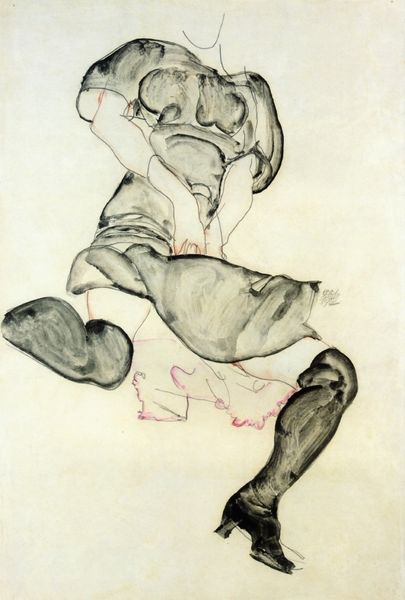
Copyright: Public Domain: Artvee
Editor: This is Edvard Munch's "Akt på sengen," or "Nude on the Bed," a watercolor made sometime between 1919 and 1924. I'm struck by how fragile and vulnerable the figure seems, almost dissolving into the white of the paper. How do you interpret this work in the context of Munch's larger oeuvre? Curator: The fragility you observe is key. This work arrives after periods of immense personal and social upheaval, following the First World War and Munch's own struggles with mental health. "Akt på sengen" challenges the male gaze, so common in depictions of the nude. The subject here isn’t presented for visual consumption, but seems lost in contemplation. What is she contemplating, do you think? Editor: Perhaps reflecting on those years of conflict or her own role within societal expectations? It almost feels like a resistance to being defined or objectified. Curator: Precisely. Consider Munch's exploration of psychological landscapes. How might his expressionistic style serve as a form of social critique, especially regarding the expectations placed on women's bodies and emotional experiences in his time? How does it speak to us now? Editor: It speaks to the continuing struggles many face today, to reclaim their identities against pressures of modern objectification and unrealistic standards of beauty. Curator: Exactly. Munch uses his art to give visual language to feelings. Even the seeming simplicity is deceptive; consider the power of the minimal color palette. It reinforces the vulnerability and exposes underlying anxieties that still resonate today. Editor: I never really thought about that – it really sheds a light on it! Thanks! Curator: And thank you; it’s vital to engage in dialogues that bridge the past and the present, prompting us to question established norms and the forces shaping our lives today.
Comments
No comments
Be the first to comment and join the conversation on the ultimate creative platform.
